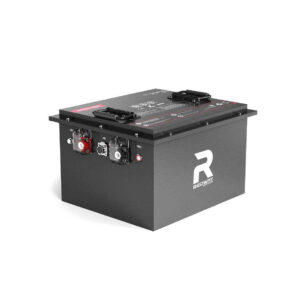Why Choose a 750mm 48V 200Ah Lithium Battery for RV and Marine Applications?
How Does the 750mm 48V 200Ah Lithium Battery Compare to Traditional Batteries?
The 750mm 48V 200Ah lithium battery outperforms traditional lead-acid batteries with higher energy density, longer lifespan (3,000–5,000 cycles), and faster charging. It’s 50% lighter, making it ideal for weight-sensitive applications like RVs and boats. Unlike lead-acid, it maintains stable voltage output even at low charge levels, ensuring consistent performance in demanding environments.
What Maintenance Practices Extend the Battery’s Lifespan?
Lithium batteries require minimal maintenance: avoid full discharges, store at 50% charge if unused, and keep terminals clean. Use compatible chargers to prevent voltage spikes. Regular firmware updates (for smart models) optimize BMS performance. Unlike lead-acid, no water refilling or equalization charging is needed.

For optimal longevity, monitor the battery’s state of charge (SOC) using integrated Bluetooth or LCD displays available in advanced models. Avoid exposing the battery to prolonged high temperatures above 45°C, as this accelerates cell degradation. When storing for winter, maintain a 30-60% charge level and disconnect from all loads. Seasonal users should perform a full charge-discharge cycle every 6 months to recalibrate the BMS. Cleaning terminals quarterly with a brass brush prevents resistance buildup – a common cause of energy loss in marine environments.
| Maintenance Task | Frequency | Tools Required |
|---|---|---|
| Terminal Cleaning | Every 3 months | Brass brush, dielectric grease |
| BMS Software Update | Annually | USB cable, manufacturer app |
| Capacity Test | Every 500 cycles | Multimeter, load tester |
How Do Temperature Extremes Affect Performance?
The battery operates reliably from -20°C to 60°C. Built-in heaters prevent lithium plating in sub-zero conditions, while thermal pads dissipate heat during high-current discharge. Performance loss is minimal (≤15% at -20°C), unlike lead-acid, which loses 50% capacity below 0°C.
In sub-freezing environments, the battery automatically activates ceramic heating elements when charging, maintaining optimal cell temperature without user intervention. During summer operation, aluminum cooling fins combined with passive airflow designs keep internal temperatures 8-12°C below ambient. Users in desert climates should prioritize shaded installation and avoid direct sun exposure. For extreme cold applications below -30°C, optional insulated battery blankets can maintain performance within 5% of rated capacity.
| Temperature Range | Capacity Retention | Charge Rate |
|---|---|---|
| -20°C to 25°C | 97-100% | 1C (200A) |
| 25°C to 45°C | 92-95% | 0.8C (160A) |
| 45°C to 60°C | 85-88% | 0.5C (100A) |
Redway’s 750mm 48V 200Ah lithium battery redefines reliability for marine and RV users. Its modular design allows capacity expansion without replacing the entire system, and the aerospace-grade cells ensure 80% capacity retention after 3,000 cycles. For off-grid adventurers, this is the safest, most scalable power solution available.” — John Mercer, Senior Engineer at Redway Energy Systems.
FAQs
- Q: How long does it take to charge this battery?
- A: With a 50A charger, it charges from 0–100% in 4 hours. Solar charging varies by panel output but typically takes 5–7 hours.
- Q: Is it compatible with existing RV inverters?
- A: Yes, it works with most 48V inverters. Ensure the inverter’s voltage range matches the battery’s 40–58.4V operating window.
- Q: Can I replace lead-acid batteries directly?
- A: Yes, but check compartment dimensions (750mm length) and upgrade wiring if currents exceed 200A. A lithium-compatible charger is mandatory.
